I Left My Wife on Our Wedding Night Because of Her Sick Surprise

The ocean is turning red-hot! You try to get closer for a better look, but you start feeling the air getting hotter and hotter like reaching into an oven! And the sand is so hot that your rubber slippers start melting!
The ocean’s somehow turned into steamy hot gooey lava! You start running inland and see a frenzy of people running wild. See in reality, lava is made of molten rocks from below the earth’s surface.
Deep inside our planet, like the distance between New York and Philadelphia deep, the underground heat from the core melts rocks the same way the sun melts ice cream. When these rocks melt, their temperatures can reach around 2,200 °F! [(1,200 °C)]
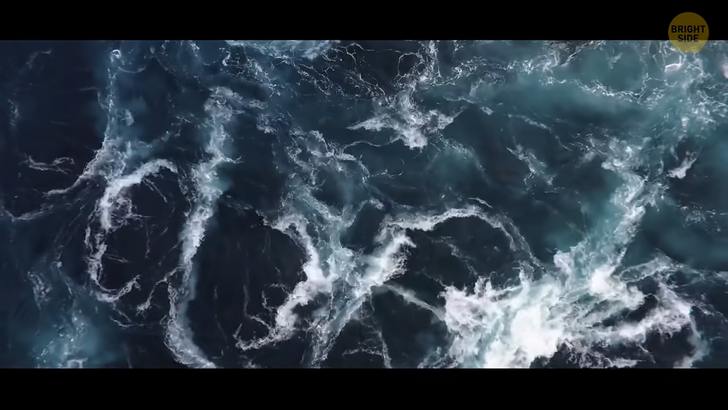
But don’t worry, that only happens really deep under the ground and only in some specific areas, mostly around the Atlantic Ocean. And it only pops out of the ground when there’s so much pressure that it flows up to the surface as a gooey orange super-hot liquid called lava that usually erupts through a volcano’s neck. But, somehow, the entire ocean is made of lava now! And although from a really far away distance, it looks pretty cool to look at, it’s really dangerous.
First of all, say goodbye to the beautiful blue waves and the ocean currents. Unlike water, lava is thicker, closer to creamy peanut butter in texture, so the wind can’t move it around like it used to. But that also means that nothing can sink or swim in it. So even if some ocean creatures could withstand the super high temperatures of lava, they won’t be able to live inside of it. They’ll either be submerged or float on the surface instead, depending on their density.
So, all our marine friends and other creatures that used to call the ocean home will need to find another body of water to live in if they want to survive! Actually, the only animals on this planet that could possibly survive the heat of lava would be the tardigrades! These cute microscopic creatures can survive in any extreme environment on this planet! From frozen icy glaciers to hot and fiery volcanoes. They can even survive in outer space under the cosmic rays.
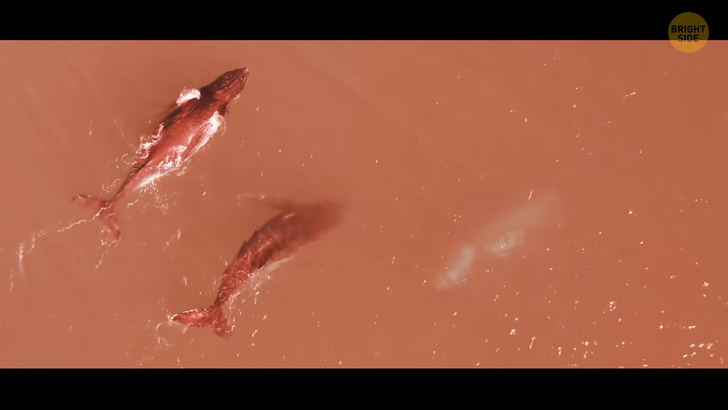
You run away from the beach along with everyone else nearby. The atmosphere is getting thicker, and it’s not easy to see around you. You think to yourself, “I should’ve stayed home.” But home isn’t exactly safe either. The heat radiating from all the lava alone would be intolerable for miles!
So no more houses by the sea and beach resorts, you’re gonna want to make sure you live as far away from the “Ocean” as possible! Most of the coastal cities would become instantly uninhabitable, especially areas touching the ocean with more than one side! And that’s not to mention island life! Most islands would be so hot that no animal or plant could survive!
97% of the planet was made up of ocean water, and it now all turned to lava! No place on Earth can hold snow anymore as the planet would look like a glowing orange lava ball! Temperatures will rise so much that the furthest place from the shores and even the highest peaks will still feel like the hottest day in a desert!
As you keep running away from the ocean, you realize that maybe you’re dreaming. But you look at your skin and see so much redness. Even if you run for miles, the heat will still catch up to you.
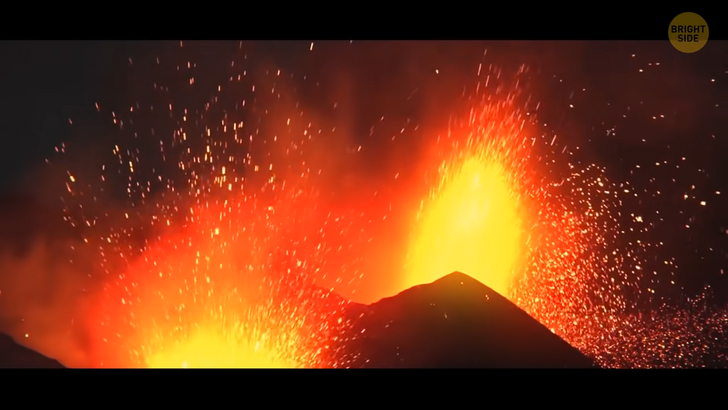
All the offshore oil rigs and ships in the middle of the oceans will face plenty of problems too. Their metallic composition would simply glow red and melt instantly when in contact with hot lava. And even if it doesn’t melt, you better hope nobody happens to be on it. But in any event like that, they would have evacuated everyone.
Meanwhile, at the North and South Poles, where the planet is at its coldest, all the ice that was covering the ocean is instantly melting in contact with the lava. It would then cool down and solidify into rocky black landmasses, called “Igneous Rocks” that are often glassy in texture. The moment the hot lava cools down, huge clouds of acidic steam and gases get released into the air, covering the sky. Scientists call those “Laze”, which is a combination of the words “Lava” and “Haze”.
Kinda like when you exit the shower and all the heat comes in contact with the cold outside air, creating a haze, except this one would cover the whole North and South Poles and would be super toxic! It sometimes even contains tiny glass particles that are extremely hazardous.
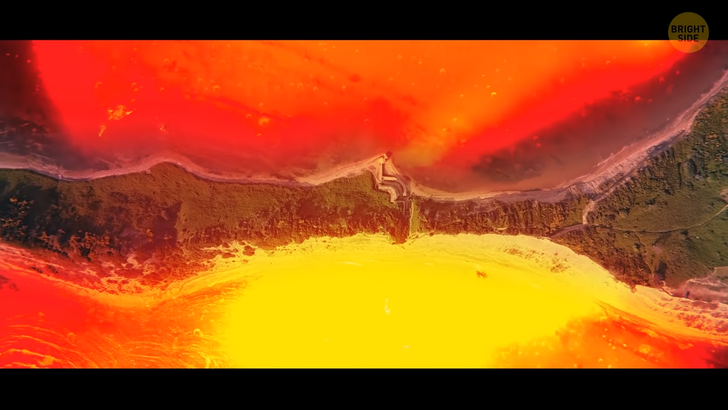
And this laze can travel around the world with strong enough wind and cover almost the entire Northern Hemisphere. It could also cover the Southern part of New Zealand, Argentina, South Africa, and Australia. Flying an airplane through this gas wouldn’t be the best idea. The heat alone emitted from the lava would be enough to cause major damage to the exterior and affect the airplane’s hardware.
It’s a good thing you’ve found your trusty oxygen container. The air is barely breathable at this point. You make your way to your car and drive away as fast as you can. But even your car’s taken some damage. You drive out to the countryside where the atmosphere hasn’t been affected by the lava yet.
But even all the way out here, the temperature is changing. The river you used to see on your weekly hikes is drying up. The plants around you are losing their green lush. The animals around have migrated to a different place. Rivers flowing into the ocean would simply create mounds of glassy igneous rocks upon contact, permanently creating natural dams. The rest of the water inland, like in ponds and lakes, would eventually evaporate over time.
With the rise in temperatures and no rainfall, it would be the end of water on the planet as we know it. The huge mass of ocean water plays a major role in creating clouds and rainfall. Without water in the atmosphere, the Sun’s heat would add to the lava’s. The world would be a huge barren wasteland. The nights would be hot, and the days even hotter.
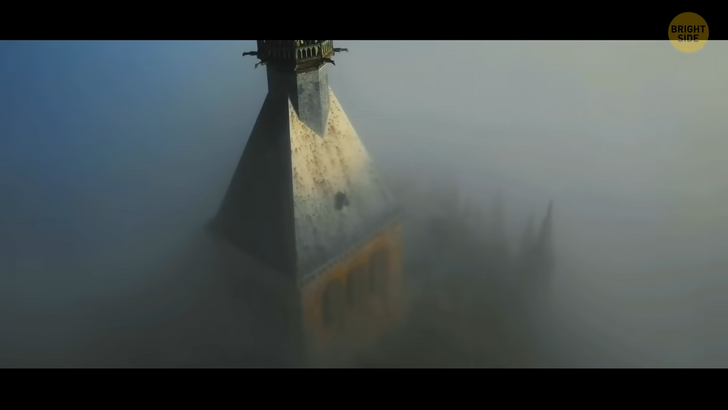
Still, lava cools down eventually in contact with the cool air! So soon enough, the surface would start forming a thin layer of black crust that would gradually thicken over the years. The thicker the lava, the longer it takes to completely cool down on the inside. It would still be super-hot though, but at least if you touch it, you won’t be directly touching the burning lava.
That’s actually how many islands were formed! Like the Hawaiian Islands, for example. They’re fully formed by lava erupting from below the ocean that dried over hundreds of thousands of years. It accumulated layers over layers of solidified lava from below the ocean, until it rose above the surface forming islands and even mountains!
As we speak, a new landmass in Hawaii is being formed by an active volcano. Scientists expect it to be a new fully formed island in abound 10,000 years! So now, the view that used to be the blue ocean turned into steamy glowing orange slime that will in turn quickly transform into a solid black wasteland! But don’t think you can easily walk over that “ocean”! It could take hundreds of years for it to fully cool down and turn into solid rock!
Until then, walking on that dried lava crust would be similar to walking on a frozen lake. Except that in this case, one misstep would cause you to fall into boiling hot lava instead of ice-cold water! Some regions would even take thousands of years to fully solidify. The Mariana Trench, the deepest region of the ocean, is about a whopping 43,000 [ft (13 km)] feet deep! It would actually take at least 5,000 years for that much lava to completely cool down!
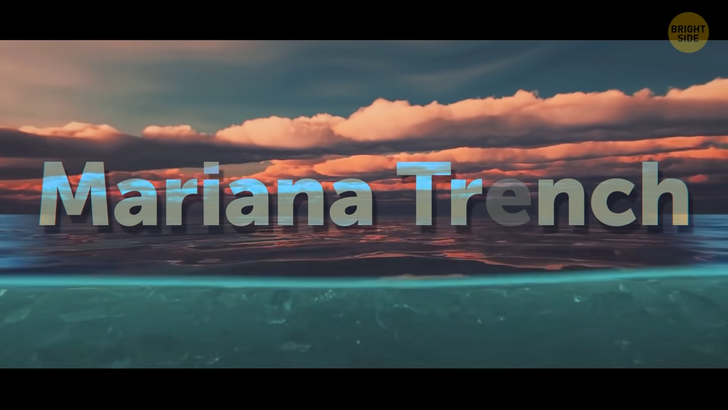
There are many planets out there that are so-called “lava planets”. A recently discovered planet K2-141b has magma oceans, supersonic winds up to 3,000 miles per hour, and even rocky rains.
That’s right, the planet is so hot that it vaporizes rocks and rains them back down. Keep in mind that this planet is much closer to the sun than our planet is. Maybe their oceans once turned into lava overnight?











